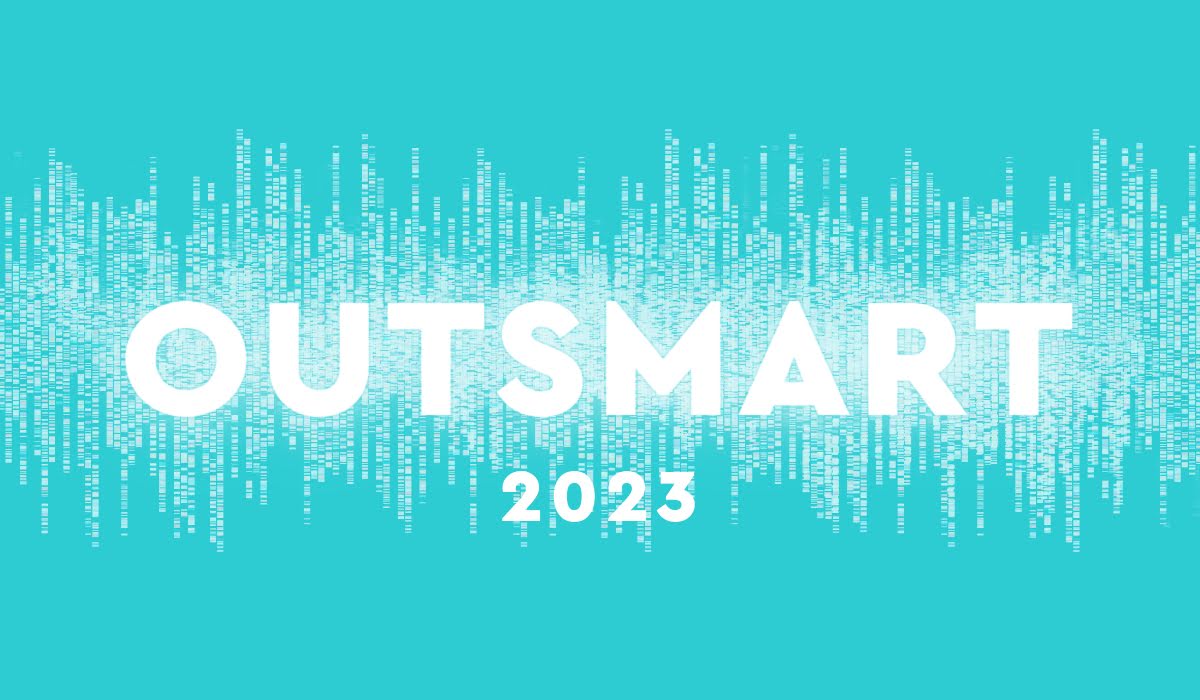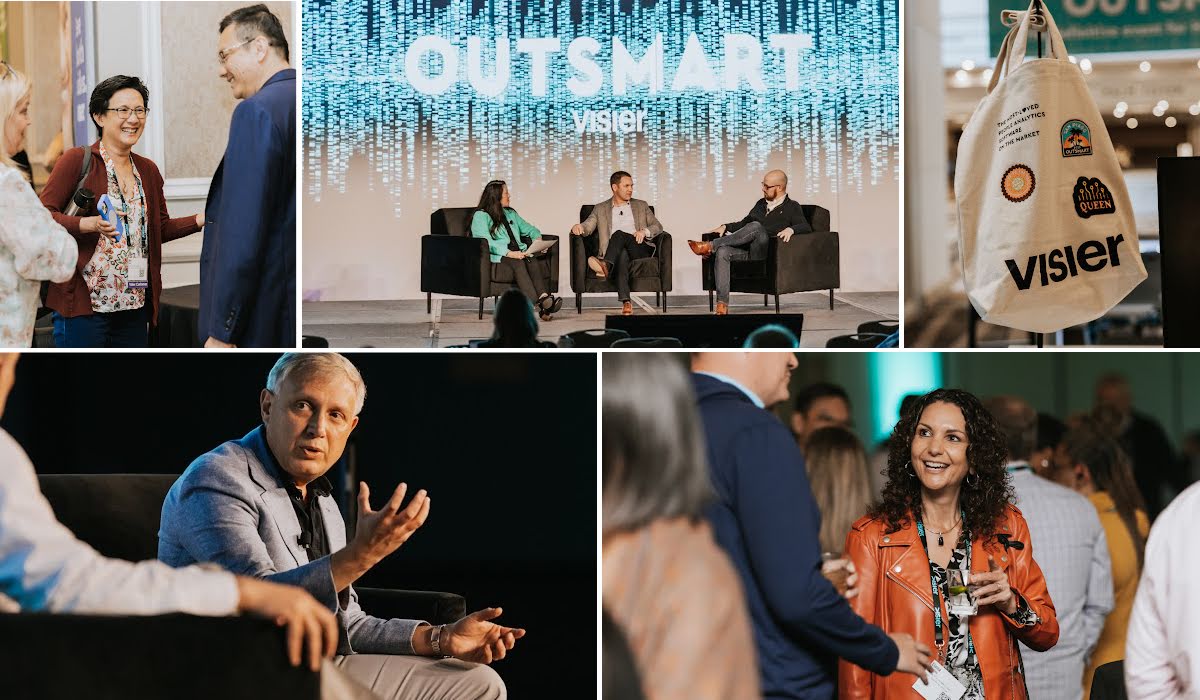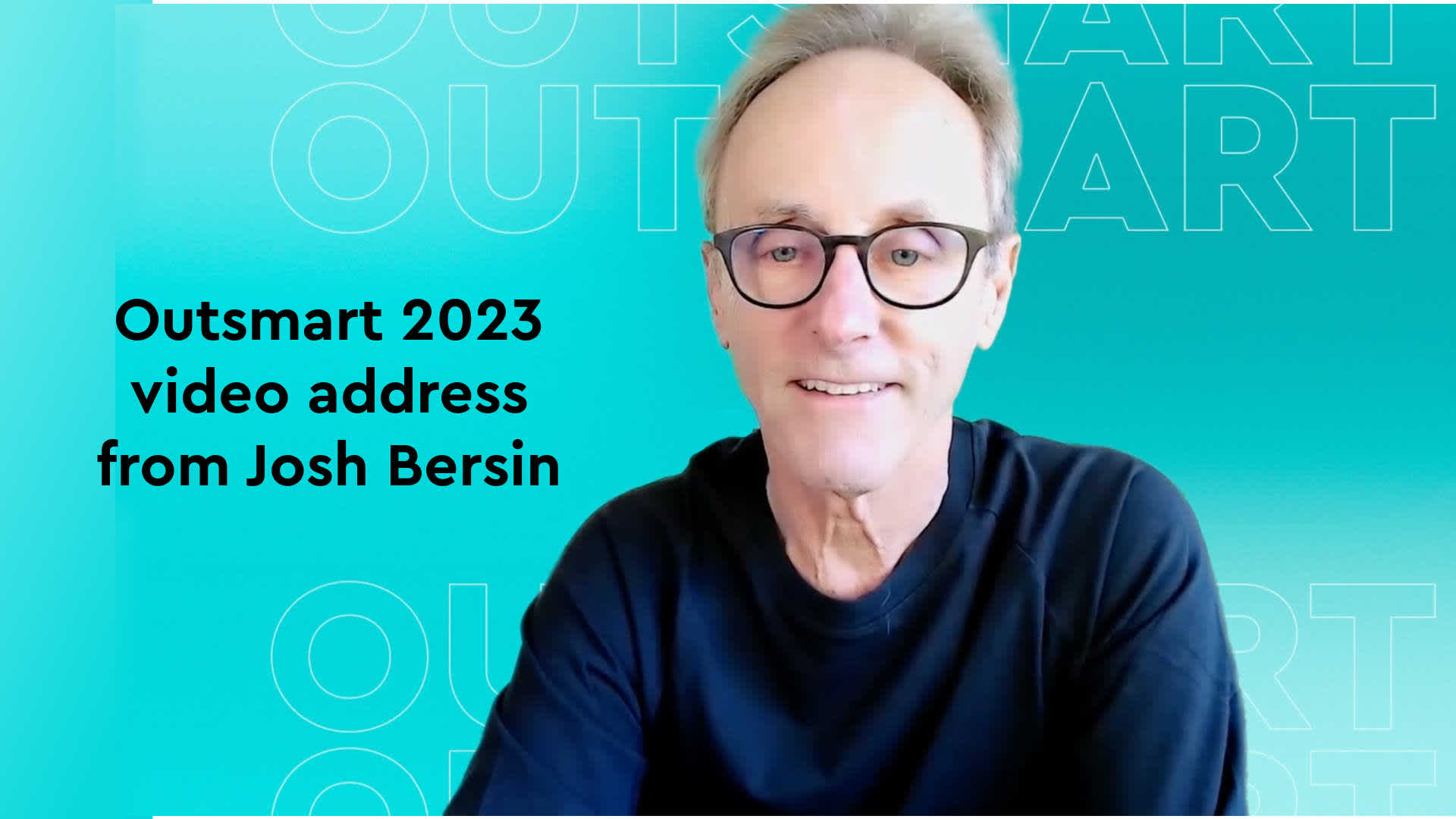Top 8 Takeaways From Outsmart 2023
The top eight takeaways from the 2023 Outsmart conference from Visier.

After three years of convening virtually, Outsmart 2023 wrapped in San Diego following an invigorating couple of days filled to the brim with incredible insights, fascinating sessions, and unparalleled networking. At Visier’s annual conference where we celebrate our customers’ innovations in people analytics—and share about new ones that are in flight—the energy and curiosity was palpable.
Hundreds of participants attended detailed sessions on hot workforce topics ranging from skills-based hiring to post-pandemic retention strategies, from AI’s role in people analytics to the role of leadership in employee experience, and more. The Q&As that followed truly exemplified why Outsmart is dubbed the “definitive event for HR innovators, people leaders, and disruptors.” Without a doubt, HR leaders and people analytics professionals are a curious and compassionate group that, like us, all share the belief that people analytics is not only transformative to business, it is imperative to its success, as well.

The perfect storm that people analytics will weather
Now, as we stare down the unstoppable juggernauts of generative AI, CSRD requirements, and pay transparency laws coupled with a contracted labor market and a recession, it’s people analytics’ time to shine a light on how people impact the business—and, conversely, how the business impacts people. Without these insights businesses are at risk of losing their best people and losing revenue.
But, just as HR emerged as a superhero during the pandemic, people analytics will continue to save the day no matter what comes next.
Top 8 things to remember from Outsmart 2023
1. Think outside-in.
Start with the business problem outside HR and work your way back to the people impact. HR is passionate about their work, and sometimes this errs too much on the side of being insular. HR exists to serve the business and that starts with a reorientation to outside-in thinking—starting with the challenges to and opportunities for the business, then working back to the workforce impact. It sounds simple enough, but it's proven to be a difficult transition for HR. Now is the time for HR to make the shift—in fact, it’s becoming an imperative.
2. Fall in love with the problem, not the solution.
We all love our technology tools because they make our lives easier. That is, until too much attention on them obscures the reason they were invented. Keep focused on the original problem that needs solving so that when the internet goes out you can still turn on the lights to see where you’re walking.
Analytics exist to solve business problems, while data for data’s sake is interesting to only the most ardent analysts. In other words, don’t be overcome with bias toward reporting and operations only (no matter how amazing your tools are!). Instead, empathize with the business problem—how to approach it, how it affects your organization’s people and performance, and how the outcome impacts the business results.

3. Productivity and human performance will separate the winners and losers.
Businesses succeed because of people, and they fail because of people. When those people are empowered to do their best work, in the most effective ways, it’s a win-win for business and for employees. What enables all this #winning? People insights.
The next horizon for business transformation is about workforce and, specifically, how workers impact the present and future of the organization. It starts with understanding how people are performing and the conditions that drive maximum productivity and effectiveness. Companies that take this for granted are doomed to deliver average results. Those that lean into the challenge using data to guide the way, will emerge as the highest performers in their category, delivering outsize impact for the business.
4. Everything is connected.

HR isn’t an island, and neither are the business lines it serves. Josh Bersin’s idea of “systemic HR” breaks down delivery, domain, and data silos—not just clearing the causeways between functions, but revealing paths to new worlds of insight opportunities.
Only by removing silos and connecting will those within and without HR truly understand the two-way impact between people and business. Even within HR silos exist—Learning and Development, Talent Management, Total Rewards, People Analytics—various departments making decisions in isolation. To have a successful workforce strategy in HR and beyond, all of these must connect because the decisions made by each group are all interconnected.
For example, compensation decisions need to be made in the context of performance, of course, but also in consideration of diversity, equity, and inclusion goals. DEI goals may impact on time to hire, which further impacts business results. Optimize for one and you might win the battle but ultimately lose the war. All is dependent upon unified data and an integrated approach to answer questions. Systemic HR is one connected system.

4. Skills is the unit of insight of today’s economy.
The speed of technology innovation and the landscapes it transforms is so fast that relying on previously-trusted predictors of competence like a 4-year degree or 15 years in a single role, is no longer the definitive indicator of a good job fit. Today, understanding and hiring for skills is the best way for many organizations to find their purple squirrels.
Still, some leaders are unclear about what skills are needed, and what learning programs and initiatives they need to prioritize. Some will make a beeline for talent marketplace solutions—which match employees to new projects—without first establishing a skills foundation. It’s like rushing to the grocery store to shop for ingredients for a complicated dinner party menu you’ve never made before…and you don’t know how to cook.
To become a skills-based organization and transition the right way, organizations must first understand what skills they have, which they are losing, and which they need now and in the future to sustain business results.
See the new Visier People®: Skills Intelligence Engine in action when you take a tour.
5. People data is business data.
A particular kind of organization will thrive in this era—it’s called the people-powered enterprise. Every organization relies on people to produce business results, but people-powered organizations are different. They view their people as equal partners in value creation, leveraging their people data to understand the explicit connection between people and the goals and objectives of the business. With this capability, leaders are able to zoom in, zoom out, and see around corners to make better decisions about hiring, training, promoting, reporting lines, organizational structure, and more.
You know this, we know this, and it’s time that the leadership at your organization also understands how people data is crucial to business outcomes—like the business impact of whether or not sales teams hit their revenue goals, and the trickle down effect to many parts of the business as a result.
Read the guide: 5 Ways People-Powered Organizations Drive More Business Value
6. Imagine it. Build it with Alpine.
Visier’s platform, Alpine, opens up a world of possibilities for HR innovators and people data analysts. If the last 25 years were all about optimizing for the customer journey, then the next 25 will be all about optimizing for the journey of the people who make up the workforce. In the same way that the customer transformation we’ve witnessed has taken an ecosystem of innovation focused on longtail challenges and opportunities across the customer journey, we now need to mobilize an ecosystem of innovators to solve untold challenges and opportunities presented by the employee journey.
Alpine makes our platform and data available to this community so they can identify and solve problems we’ve never even thought of, much less tackled. The possibilities are huge!
Learn more about Alpine by Visier, the first people-focused PaaS, and get involved early in the next wave of people analytics!
7. Make generative AI work for you.
Generative ai and language models promise to transform how people interact with and consume data and analytics. AI will go from an enhancement or a feature in analytics apps to becoming the actual app itself, putting insights at the fingertips of whomever needs insights delivered as part of the continuing conversation about how the business and teams work together.
“To measure the effectiveness of generative AI in the workplace, businesses need to look beyond output-driven metrics and instead focus on whether it helps employees generate value that aligns with organizational goals. By letting go of the traditional ways of measuring productivity, business leaders can focus on the metrics that matter in a time of intense transformation.”
Continue reading about how generative AI is supporting people at work—and how it might be holding them back, on the blog: Generative AI Is Already Transforming Work—but Is It Helping Teams Deliver Results?
8. The community of Innovation is strong!
The evidence was in every session at Outsmart. People analytics people are the most passionate and engaged people in HR, without a doubt. What they need now is to bring to bear the courage of their data-informed convictions to the business challenges outside HR, seizing the opportunity to transform from the inside out.
Be empowered by the confidence of delivering crucial, data-backed, indisputable insights—in minutes—and look at yourself differently: as the engine driving your organization’s transformation.



